
Dec 6 2023
5 min read

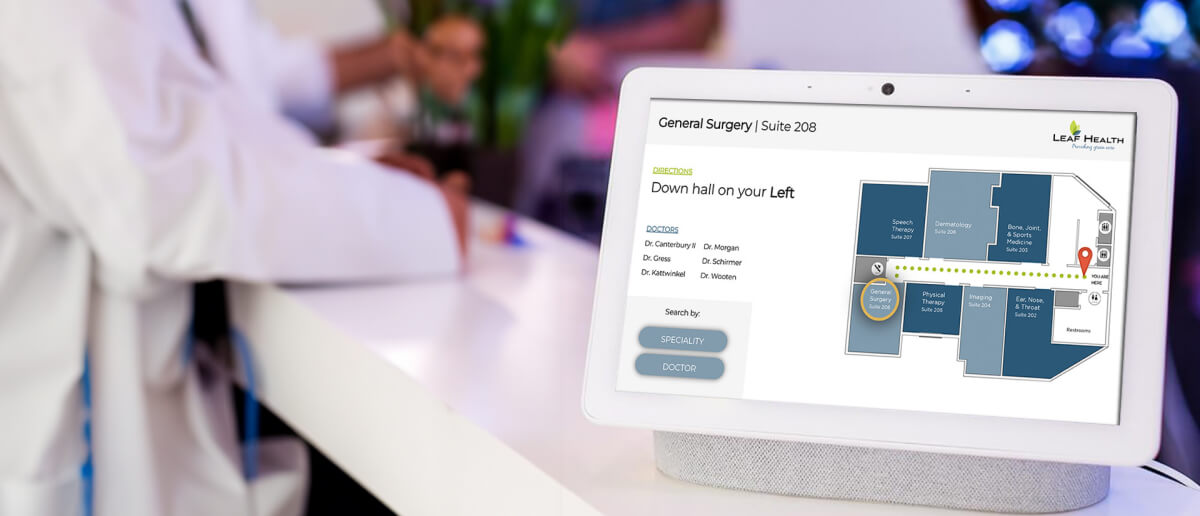
Aug
Digital wayfinding uses technologies, such as interactive maps, touch screens, and mobile apps, to guide individuals in finding their way through indoor or outdoor spaces. It has significantly improved traditional wayfinding methods by leveraging technology to provide real-time, dynamic, and personalized navigation solutions. Unlike static signage, digital screens offer real-time, up-to-date information, allowing users to access the most relevant and accurate directions.
Digital wayfinding significantly enhances the user experience in various environments by ensuring engaging and accessible experiences. It helps visitors navigate complex layouts in airports, shopping malls, and hospitals, reducing frustration and improving satisfaction.
Here are some examples that bring to life the advantages of digital wayfinding solutions:
Microsoft Campus, Mountain View
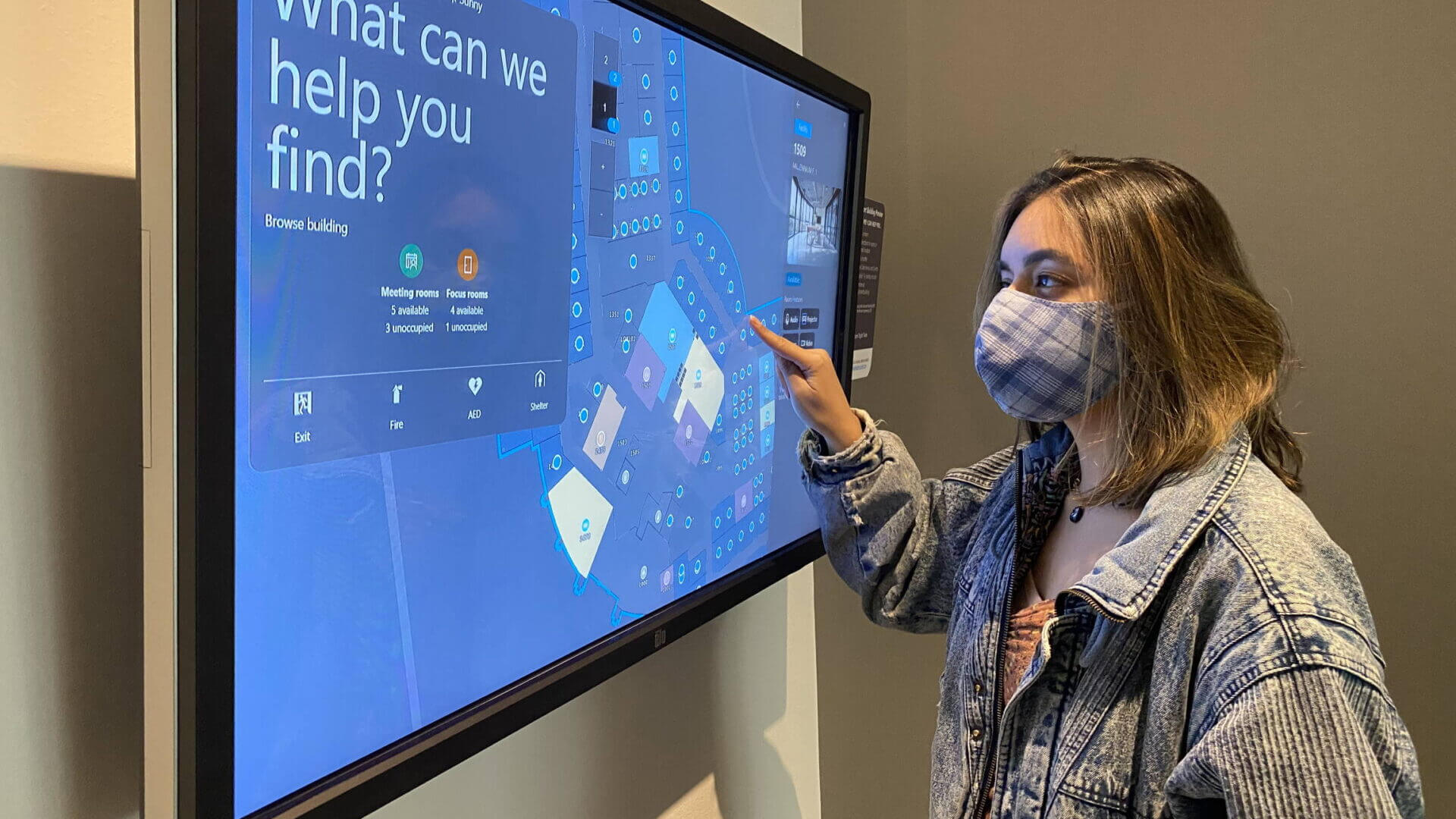
Microsoft Campus in Redmond, Washington, has taken advantage of a comprehensive digital wayfinding solution to enhance the experience of employees and visitors. The improved navigation and visibility have also facilitated better communication and collaboration among different departments, fostering a more interconnected and productive work environment.
These interactive displays give users easy access to maps and directions, allowing them to locate meeting rooms, departments, and amenities within the campus.
Google HQ, California
At Google’s headquarters in Mountain View, California, they have incorporated one-on-one kiosks and mobile apps to help employees navigate the extensive campus. Digital wayfinding technology provides interactive maps and directions to guide employees to specific locations, making finding their way around easier.
Employees can open the mobile app on their phones and search for the site of a particular building within the campus. It will give them step-by-step directions to the building, including the shortest route, and help them navigate obstacles. This technology aims to improve accessibility, enhance internal wayfinding, and ensure a seamless experience within the campus.
Hartsfield-Jackson Atlanta International Airport
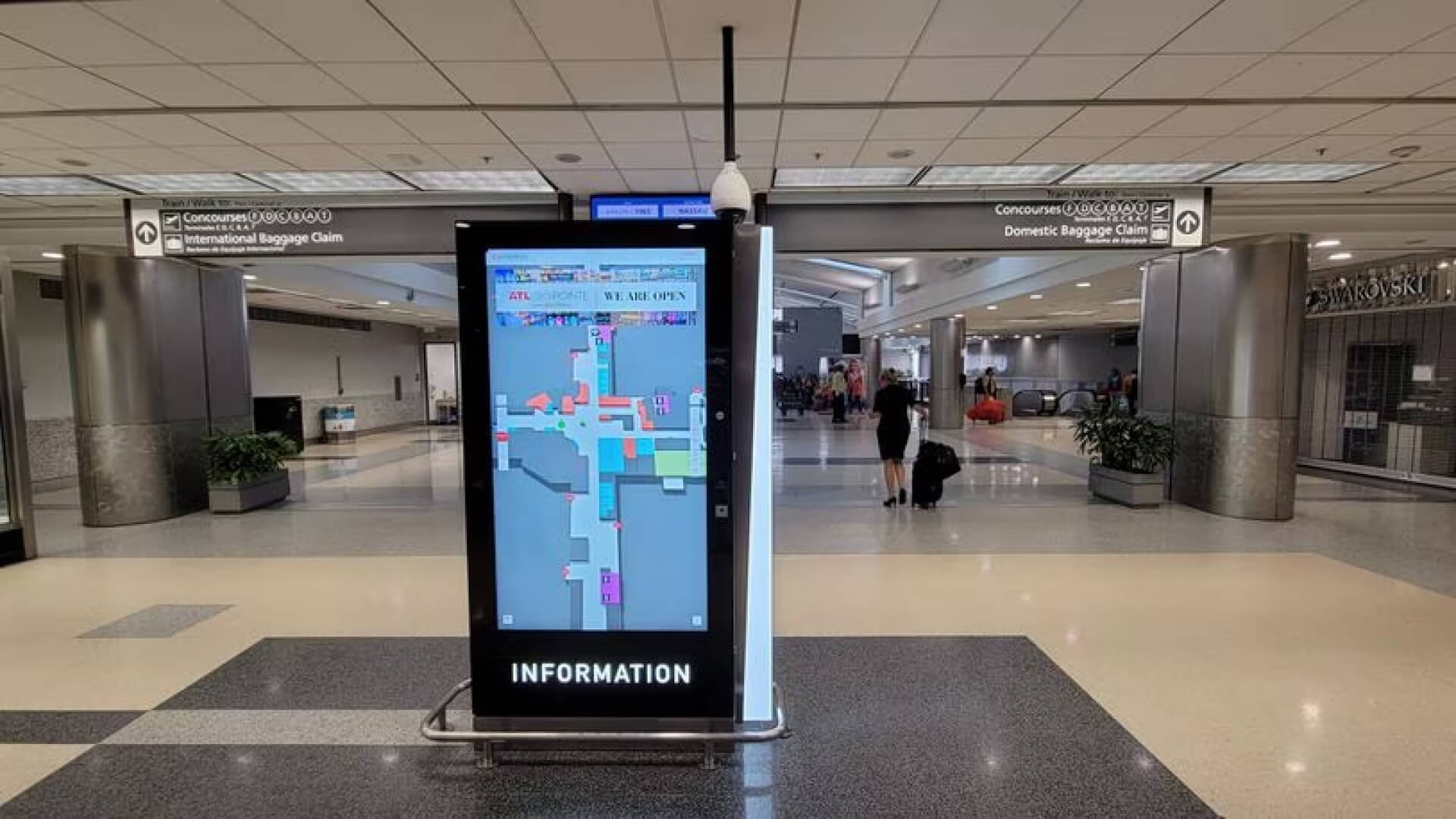
The airport utilizes advanced digital wayfinding systems to facilitate seamless navigation for passengers across terminals, gates, and amenities. Renowned as one of the world’s busiest airports, adopting these cutting-edge systems aims to enhance overall communication and operational efficiencies.
Upon arriving at the airport, passengers can readily access interactive signage and digital kiosks strategically placed throughout the terminals. These interactive displays serve as virtual guides, offering real-time updates on gate information, flight schedules, and various amenities, all presented in an easy-to-understand format. Travelers can simply input their destination or select their area of interest, and the digital wayfinding system will swiftly generate personalized and step-by-step directions to their desired locations.
Westfield London Shopping Center
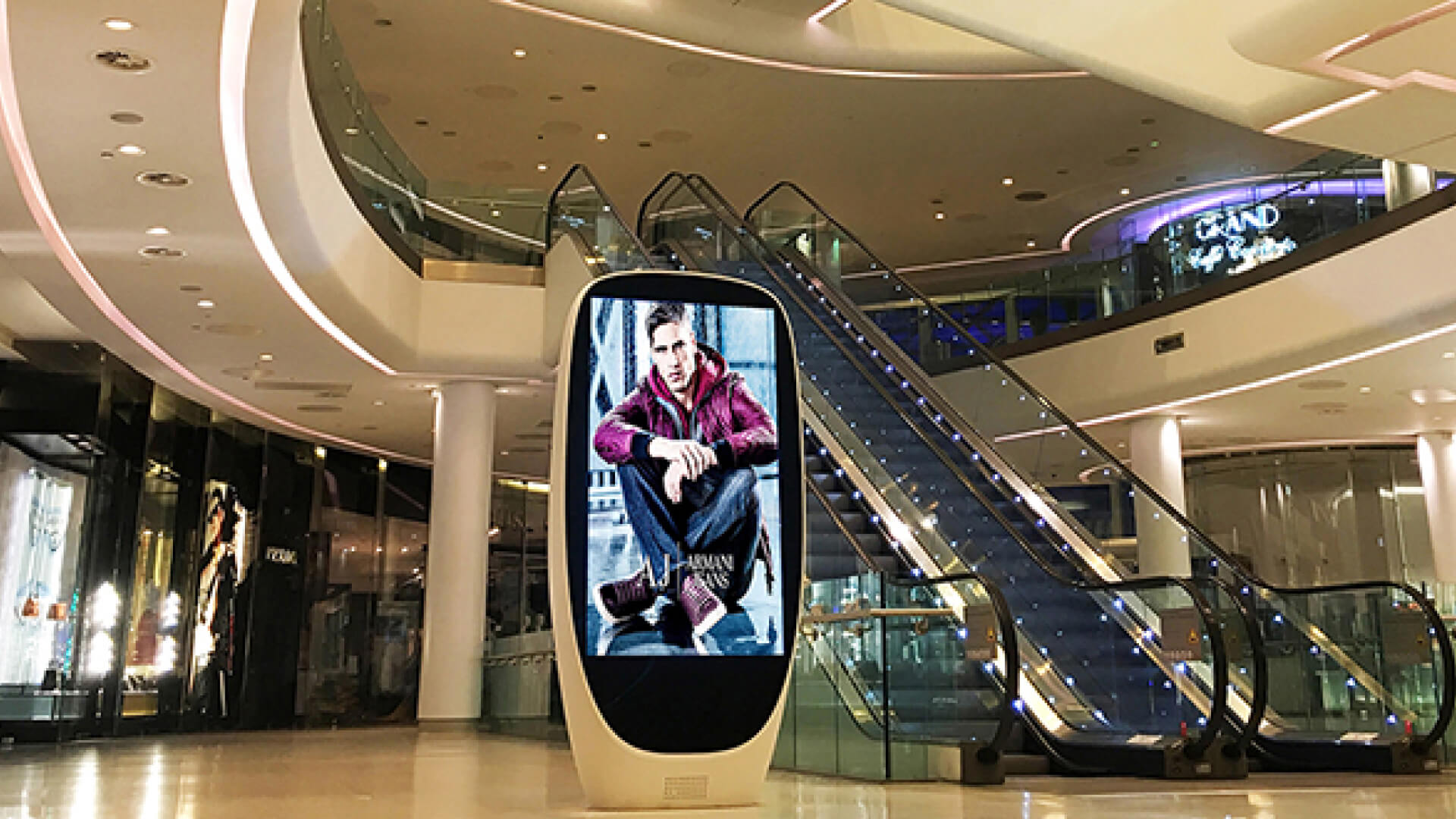
One of the UK’s largest shopping centers, Westfield, integrated an innovative e-wayfinding solution to enhance the shopping experience for its visitors. With a user-friendly wayfinding mobile app and interactive kiosks making navigation easier, shoppers can now find stores, explore offers, and locate amenities like restrooms and parking areas with just a few taps.
The digital wayfinding screens provided in-depth details of each store, cafe, restaurant, and the mall’s general information, giving users a complete guide to the area in one place. It includes navigating each site virtually and deciding whether to visit without spending much time exploring each in person.
Cleveland Clinic, Ohio
The Cleveland Clinic is a notable medical center in the United States that implemented a high-tech system to help patients and visitors navigate the complex campus. This digital wayfinding system makes use of interactive touchscreens and mobile apps to provide patients step-by-step directions to clinics, departments, and patient rooms.
Unique accessibility measures have also been included in the system to cater to the needs of those with special requirements, such as wheelchair-friendly routes and support for visual impairments. The successful implementation of this solution has led to an increase in patient satisfaction scores, a reduction in missed appointments, and improvement in the overall patient experience.
Wondering how digital wayfinding can help you deliver quality navigational support? This section will answer all your queries. Read on to find out!
Real-time updates enable seamless adaptation to changing conditions, optimizing navigation efficiency. For instance, based on live traffic data, a digital wayfinding system at crossroads, junctions, or pathways can swiftly redirect drivers to less congested routes during the busiest times of the day. No being stuck in traffic for hours or being late for meet-ups anymore!
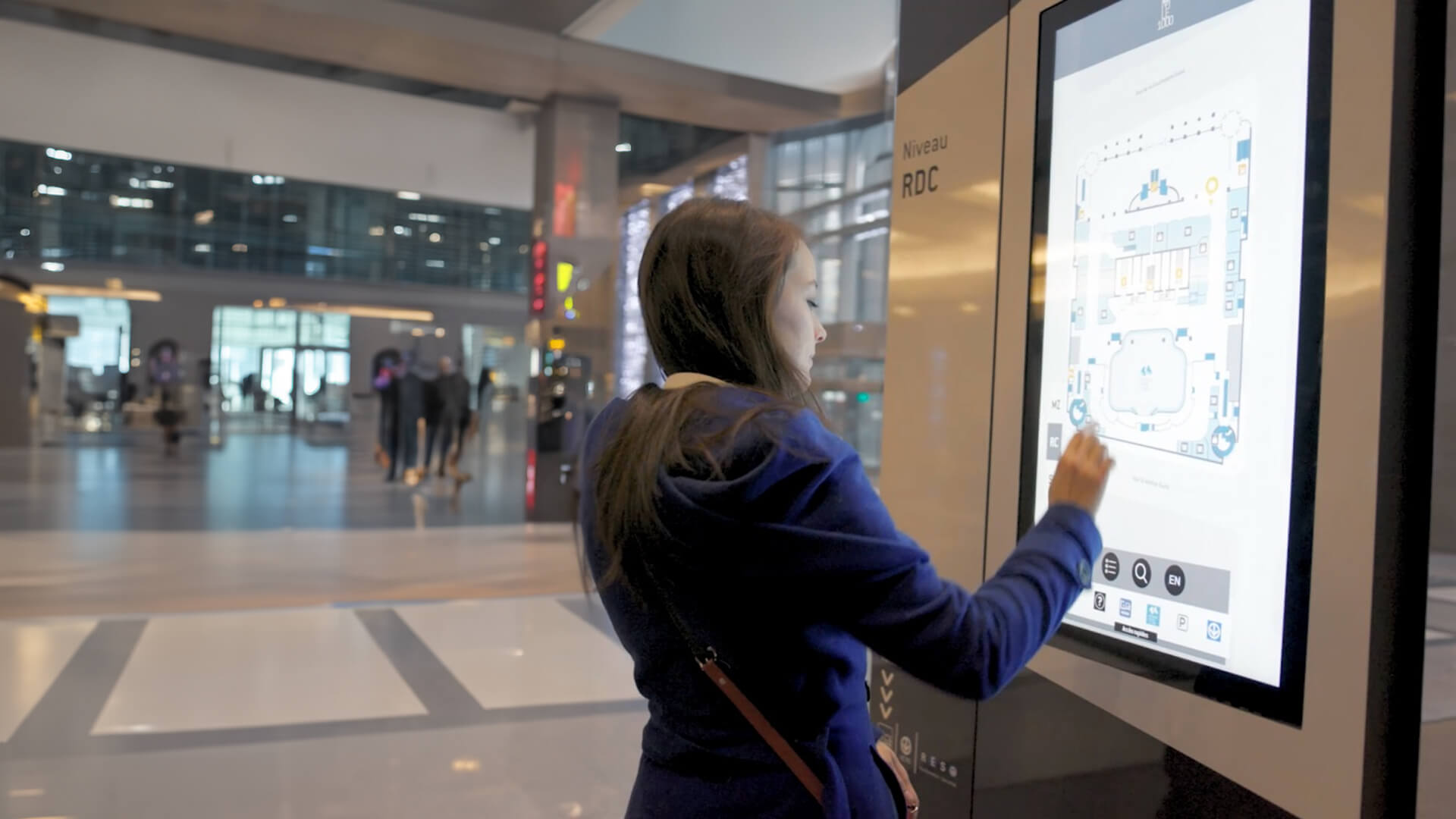
Interactive maps foster a user-centric navigation experience by empowering individuals to interact with the environment virtually. In a museum or art gallery, an interactive map with audio-guided tours allows visitors to delve into the exhibits quickly, providing contextually relevant information, enhancing engagement, and promoting a deeper understanding of the art and its historical significance.
Digital wayfinding systems prioritize personalization, tailoring navigation options to cater to individual preferences. For example, in an intelligent city, users can input preferences such as scenic routes or ones meant for eco-friendly modes of transportation like electric vehicles. The system will generate bespoke suggestions, such as the roads making for a hassle-free experience, aligning with the user’s values and interests.
Digital wayfinding champions accessibility by integrating features that cater to diverse user needs. ADA-compliant digital wayfinding solutions adhere to accessibility guidelines, encompassing haptic-touch sensors and color contrast adjustments for improved visibility and legibility. Additionally, they incorporate keyboard navigation support for users with motor impairments and ensure compatibility with screen readers, guaranteeing that visually impaired individuals can access critical navigation information effectively and independently.
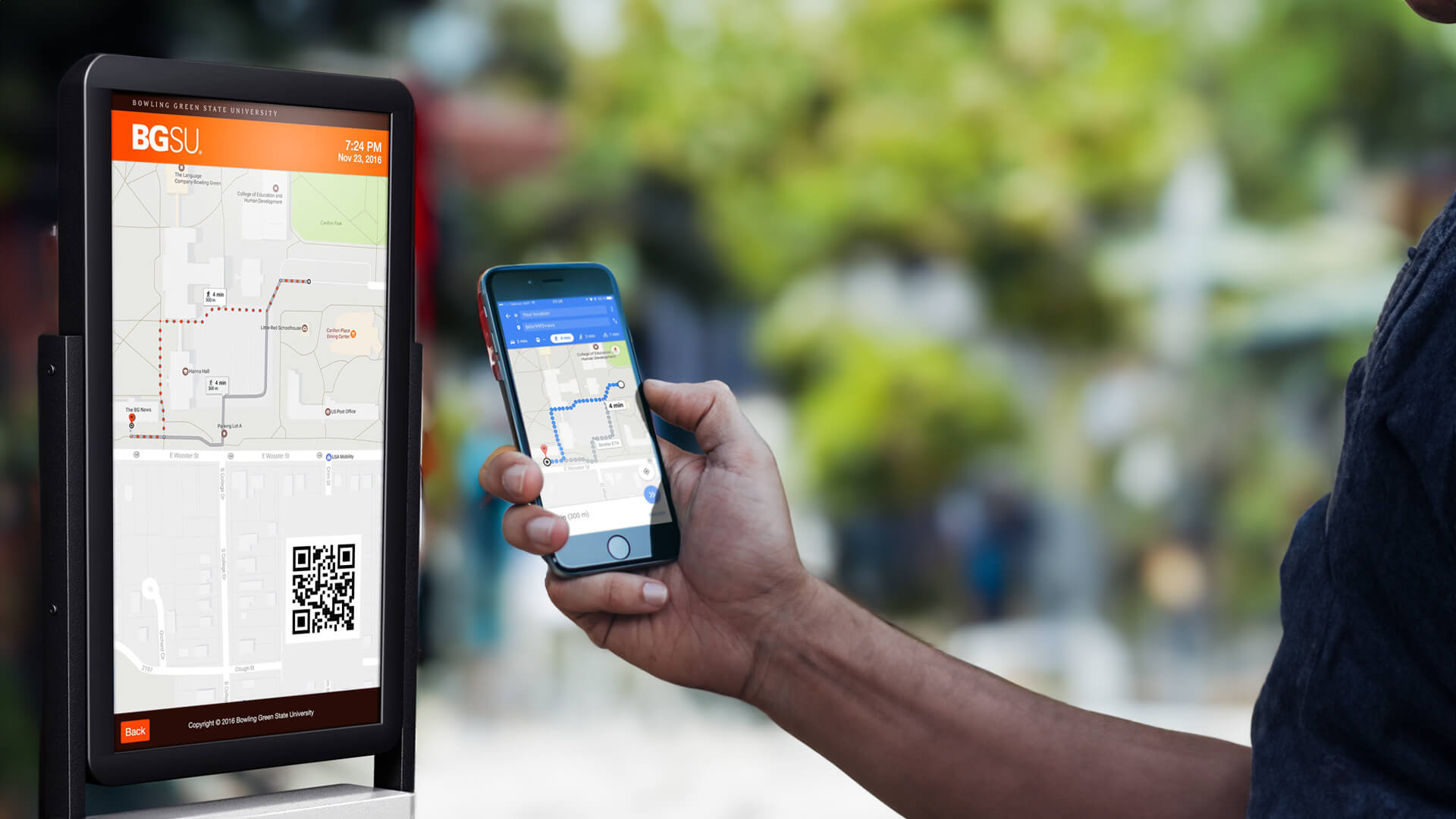
Digital wayfinding systems seamlessly integrate with mobile devices, leveraging the power of modern technology to provide users with a comprehensive and enhanced navigation experience. For instance, in a bustling shopping mall, a digital wayfinding app can be downloaded on users’ smartphones, enabling them to search for specific stores, restaurants, or amenities.
Moreover, the integration with mobile devices also facilitates personalized recommendations and alerts based on user preferences and behavior. For example, the app can analyze a user’s past navigation patterns and interests to offer customized promotions, discounts, or special offers from nearby stores.
Digital wayfinders provide businesses with valuable data analytics and insights. This data includes information on popular routes, peak traffic times, and frequently visited areas. For example, in a shopping mall, the system can track foot traffic to identify high-traffic zones, enabling businesses to strategically place promotional displays or optimize store layouts for higher visibility and sales.
Additionally, user behavior tracking in digital wayfinding systems allows businesses to understand how individuals interact with the system. In a museum setting, tracking user preferences for exhibit visits can provide insights into visitor interests. This information helps curators curate future exhibits to align with popular topics and enhance the visitor experience.
Take complete control of what you show on your digital signage & how you show it.
Start Free Trial Schedule My Demo
Dec 6 2023
5 min read
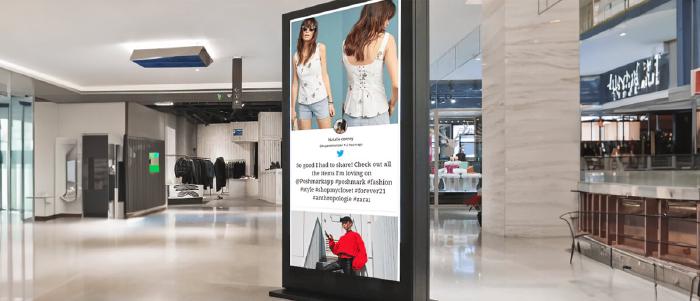
Oct 6 2023
5 min read
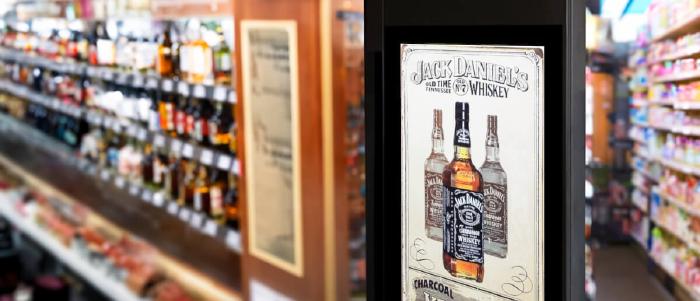
Jul 27 2023
7 min read
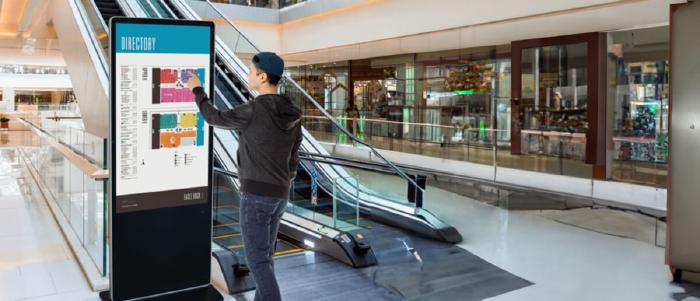
Jul 19 2023
7 min read